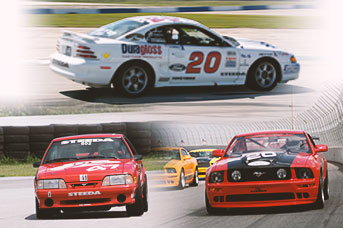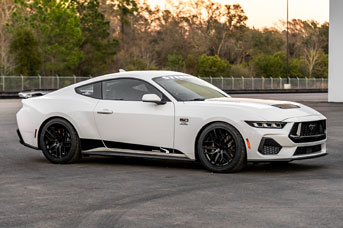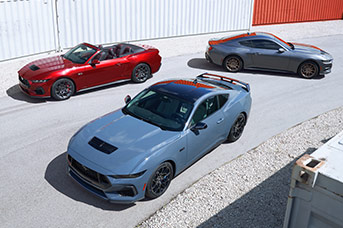The Right Way To Modify Your S197 Mustang (2005-2014)

While attention often goes to the latest Mustangs, the S197 Mustang is getting noticed more and more these days. These fifth-generation Ford pony cars are not only affordable and accessible, but they offer modern elements that make them worthwhile project cars for modifications and upgrades.
This appeal comes from a full-frame chassis setup missing in earlier generations. As a result, the S197 delivers improved handling characteristics and minimal body flex that was lacking with the Fox Body and SN95 iterations. So, instead of spending money on chassis and structural improvements, as you would with these predecessors, having an S197 lets you focus on more impactful enhancements.
Steeda’s background with the S197 dates back 20 years to when these Mustangs first hit the streets. This long history has enabled the development of a comprehensive range of performance parts for this generation of Mustangs.
The S197 generation can be broadly divided into two phases: the 2005-2010 models with the 4.6-liter Modular V8 for the GT and the 2011-2014 models with the 5.0-liter Coyote V8. A change in base power (from the 4.0-liter V6 to the 3.7-liter V6) overlapped with these periods. While the 2010 Mustang benefited from a comprehensive exterior refresh, it retained the earlier powertrain options under the hood.
Each phase has its own characteristics and potential for modification, which we'll explore in the following sections.
Table of Contents
Get Loud (Exhaust)
The logical first step for an S197 mod is the exhaust system. A high-flow exhaust improves the car's sound and provides modest performance gains by reducing backpressure and enhancing airflow.
The three-valve V8 found in 2005-2010 Mustang GTs is particularly responsive to exhaust upgrades. An axle-back system can introduce a more robust exhaust note while enhancing overall flow.
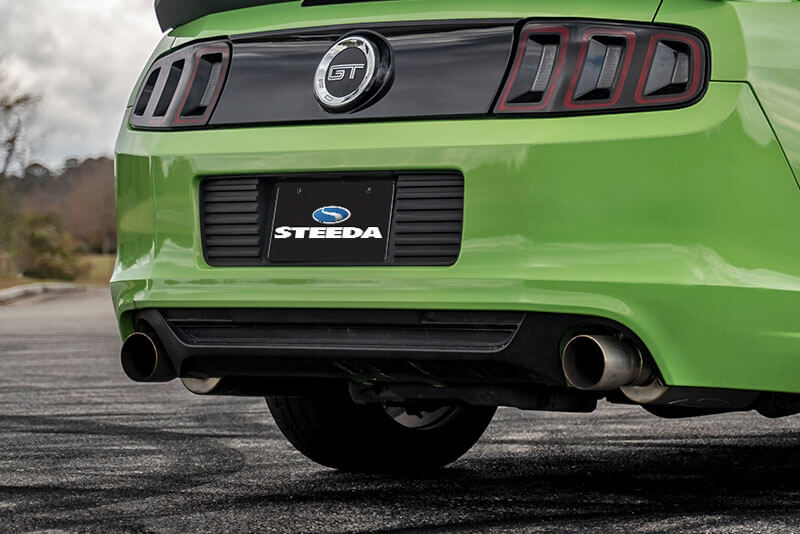
Exhaust upgrades are equally compelling for 2011-2014 Mustangs with the Coyote V8. This engine’s higher redline and more aggressive camshaft profiles are ideally suited for a freer-flowing exhaust system. It’s a no-brainer way of unlocking additional horsepower and torque.
There are several exhaust system options for the S197 Mustang:
- Axle-Back Systems: These replacements for the factory muffler and tailpipes are usually the easiest to install and provide a noticeable change in sound without being overly loud.
- Cat-Back Systems: These upgrades replace everything between the catalytic converter and the exhaust tips while improving flow and providing a more aggressive sound than axle-back systems.
- Headers: While more complex to install, headers can provide significant performance gains, especially when combined with other exhaust upgrades.
- X-Pipes or H-Pipes: These components replace the factory mid-pipe and can alter the exhaust tone while potentially improving flow.
Exhaust modifications aren’t only for V8-powered Mustangs; specialized systems designed for V6 models can offer noticeable gains in sound and performance.
When considering an exhaust system upgrade, keep local noise regulations and personal preferences in mind. Some systems may be too aggressive for daily driving, while others offer a more subtle enhancement of the Mustang's exhaust note.
Close That Gap (Wheels)
Wheel upgrades offer significant visual and performance improvements. The S197 amplifies these benefits, thanks to a platform and suspension that can accommodate larger wheels and tires than earlier Mustang generations.
Older S197 Mustangs came with 16- or 17-inch stock wheels, with newer editions getting 18-inch rims from the factory. Stepping up to 19- or 20-inch units fills out the wheel wells and can accommodate wider tires for improved traction and handling. In addition, your Mustang’s stance and appearance will transform dramatically.
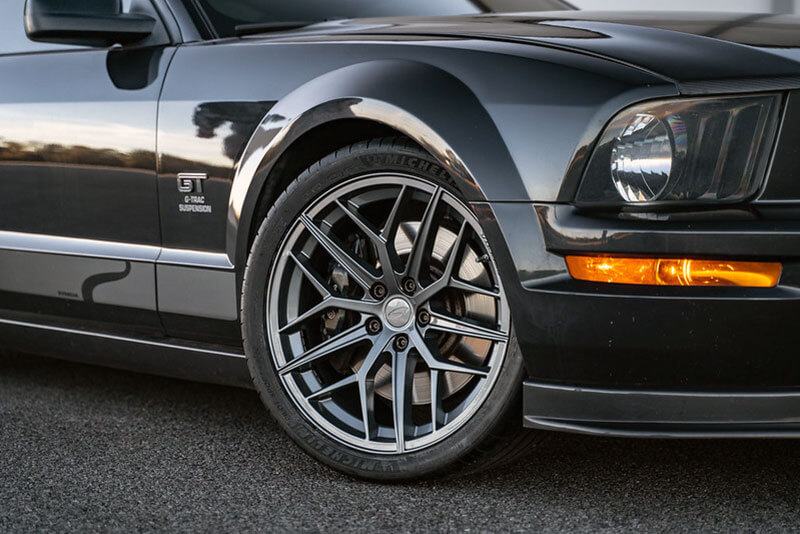
Keep these factors in mind when wheel shopping:
- Size: Both diameter and width are critical. Larger diameters can improve the car's appearance, while wider wheels accommodate wider tires for better traction.
- Offset: The proper offset ensures the wheels fit correctly without rubbing on suspension components or body panels.
- Weight: Lighter wheels can improve handling and acceleration by reducing unsprung weight. However, there's often a trade-off between weight and durability.
- Style: This is essentially a matter of personal preference, but certain styles can enhance the S197's retro-modern vibe.
- Planning: Consider any planned suspension modifications before buying wheels and tires, as these changes can impact clearance.
An interesting note for S197 owners is that many wheels designed for newer Mustangs (2015+) will also fit the S197 platform. This compatibility opens up many modern wheel designs for owners looking to update their car's appearance.
When elevating the wheels, it's worthwhile to upgrade tires at the same time. Wheel and tire packages can save money over split purchases, and you don’t have to worry about rim and rubber compatibility. There’s also the performance potential. For instance, high-performance summer tires can significantly improve the car's handling and traction, especially when combined with wider wheels.
Get Grounded (Lowering Springs)
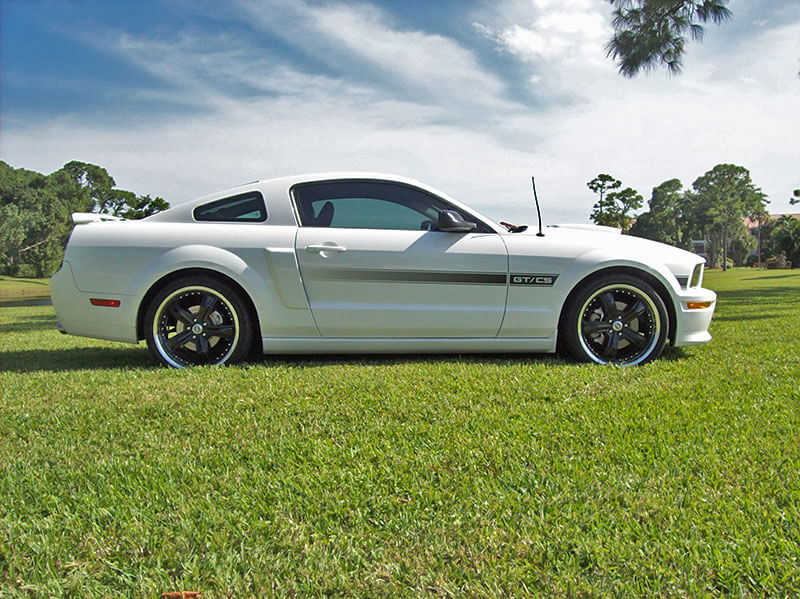
Another way to enhance the looks and behind-the-wheel experience of an S197 Mustang is to lower its ride height. Lowering springs can reduce the car's center of gravity, improving handling and reducing body roll during cornering. The dropped stance gives the Mustang a more muscular, menacing look and minimizes the wheel well/tire gap. A lower ride height can sometimes reduce airflow under the car, improving high-speed stability.
It's important to note that lowering springs aren’t a one-size-fits-all upgrade. Different Mustangs require different springs. For instance, GT500 models require higher spring rates due to the added weight of the supercharger. An example involves S197 convertibles, which require unique lowering springs that account for the different weight distribution of this body style.
When selecting lowering springs, it's crucial to consider your specific needs and usage. A moderate drop of about one inch is often ideal for daily drivers, offering a good balance of improved handling and ride quality. More aggressive drops are better for track builds or show cars but can compromise ride quality and ground clearance.
Next Level Help (Supporting Mods)

An S197 Mustang undergoing suspension upgrades may benefit from supporting modifications to ensure optimal performance and prevent issues.
One critical component is an adjustable panhard bar. The S197's panhard bar works in an arc, and lowering the car can cause the rear axle to shift to one side. This shift can lead to tire clearance issues and uneven wheel spacing. An adjustable panhard bar recenters the axle for proper alignment and the prevention of tire rub. It also can help fine-tune the rear axle position to maximize performance.
Another common issue with lowered S197 Mustangs is increased bump steer, especially with more aggressive drops. A bump steer kit can address this issue and be installed during the lowering process, avoiding the need for multiple alignments.
A bump steer kit typically includes adjustable tie rod ends, specialized spacers, and installation hardware. These components ensure proper steering geometry, improve steering feel and predictability, and help limit “wandering” over road imperfections.
Keep It Steady (Chassis and Rear Suspension)
The S197 Mustang's full-frame chassis design provides a solid foundation for performance, but there are still areas where aftermarket parts can improve rigidity and handling. These components include:
- Strut Tower Brace: This part helps reduce flex in the front suspension during hard cornering and improves steering response during spirited driving.
- X-Brace: This upgrade is available in two versions—one for inside the car and one for the trunk. It reduces chassis flex while improving overall handling and giving the car a more solid feel.
- Three-Point Torque Box Brace: This component ties together the inner and outer frame rails and the lower control arm mount, reinforcing a critical chassis area. It helps distribute forces more evenly through the chassis, reducing flex and improving launch characteristics.
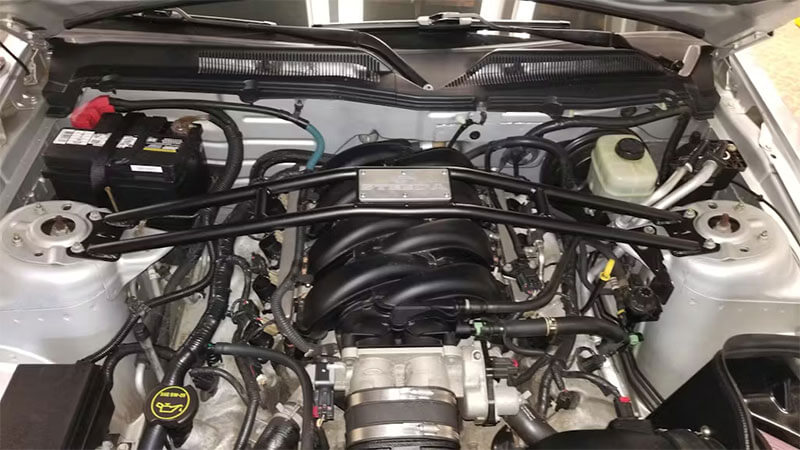
These chassis reinforcements can improve the car's overall handling, particularly during aggressive driving or on the track. They can also enhance the car's behavior over rough surfaces and during hard acceleration.
There are rear suspension add-ons to consider:
- Billet Lower Control Arms: These components provide more precise control over the rear axle and can withstand higher forces than stock arms.
- Adjustable Third Link: This allows for fine-tuning of the rear suspension geometry, which can improve both handling and straight-line performance.
- Differential Bushings: Upgraded bushings can reduce wheel hop and improve power delivery.
Power To The Max (Engine Upgrades)
Engine modifications for S197 Mustangs vary depending on the engine.
For 2005-2010 models with the three-valve 4.6L V8:
- A high-flow air intake system with a washable, reusable filter and velocity stack can improve airflow into the engine, increasing horsepower and torque.
- Charge motion plates increase airflow to each cylinder, improving engine efficiency and power output.
- An underdrive pulley kit can free up some horsepower by reducing parasitic losses from accessory drives.
- An aftermarket camshaft can significantly increase power, especially when combined with other modifications.
- High-flow headers can improve exhaust flow, unlocking more power.
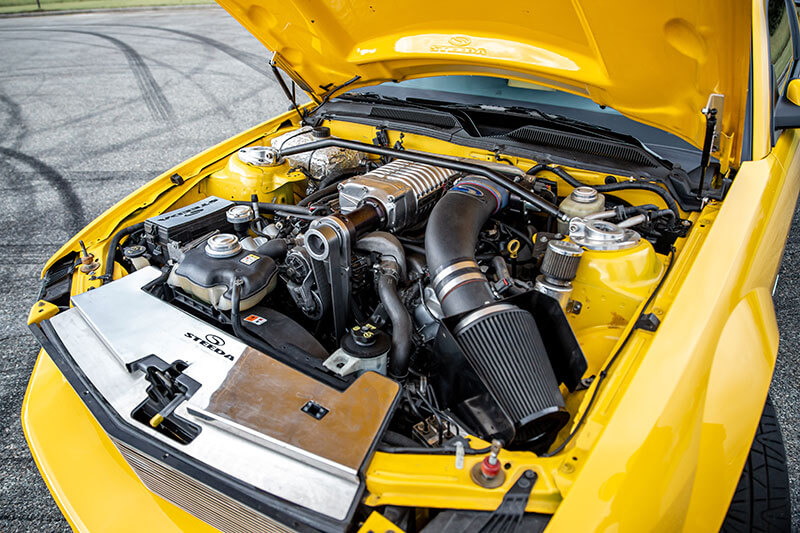
For 2011-2014 models with the 5.0L Coyote V8:
- A cold air intake system designed to work with the Coyote's variable cam timing can significantly improve airflow.
- As with earlier S197 editions, an exhaust upgrade can deliver noticeable improvement, but larger diameter pipes accommodate the Coyote’s higher output.
- Throttle body upgrades can increase high-end power.
- A ported intake manifold improves airflow distribution to the cylinders.
A cold air intake is an ideal upgrade for either S197 V6. In addition, custom tuning can maximize performance and fuel economy, no matter how many cylinders are under the hood.
Additional power adders for more serious builds might include:
- Supercharger kits provide substantial power increases but require careful installation and tuning.
- Nitrous oxide systems offer on-demand power boosts but require careful management to prevent engine damage.
- Forged internals like pistons and connecting rods, improve engine durability in high-horsepower builds.
Make It Yours (Exterior Mods)
Exterior modifications are an easy way to personalize your S197 and tell the world this Mustang is unique. Upgrade options include:
- Functional hoods provide improved styling and better heat extraction or ram-air induction. Options range from subtle heat extractor designs to more aggressive cowl induction hoods.
- Rear wing choices range from subtle trunk lid spoilers to more aggressive pedestal-style wings. Benefits include a more sporty appearance and, in some cases, increased downforce at higher speeds.
- Rear diffusers add a race-inspired look while improving aerodynamics and high-speed stability.
- Front chin spoilers and splitters enhance the S197’s already aggressive stance while reducing front-end lift and improving airflow around the car.
- Side skirts give the car a lower, more aggressive appearance and help tie the front and rear styling elements together.
- An aftermarket grille dramatically changes the car's front-end appearance. Choose from a subtle enhancement to a bold redesign.
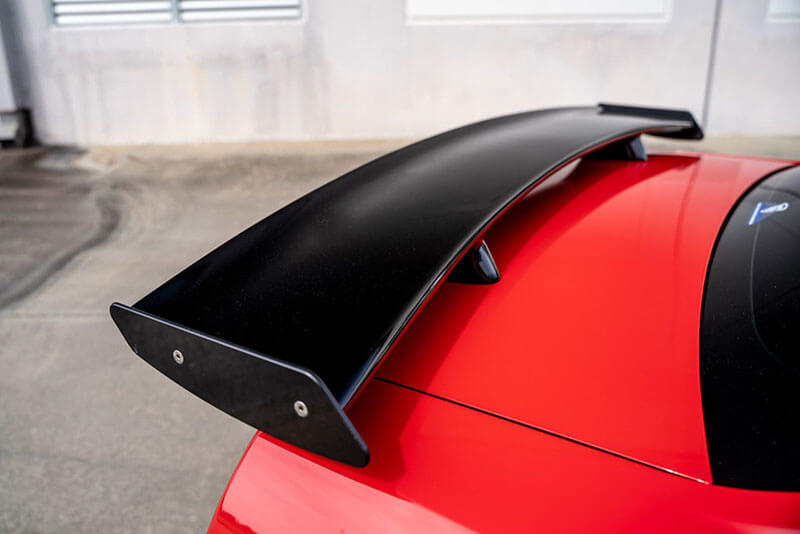
Many of these components are available in different materials, including carbon fiber, composite, and injected molded plastic, allowing owners to choose based on their preferences and budget.
The almost limitless choices for S197 exterior upgrades also include:
- Window louvers can add a touch of the 1960s to an S197 Mustang or provide a more streamlined look.
- Lighting upgrades like LED tail lamps or headlight halos can modernize the car's appearance.
- Badges and emblems can provide a subtle personalization.
- Vinyl wraps or paint can restore a faded exterior or introduce a dramatic change.
Like other modifications, exterior upgrades are best approached with a plan. A cohesive design enhances the S197’s lines, helps save money, and avoids mismatched parts. In addition, a well-thought-out mod strategy makes it easy to make changes over time, which is easier on the wallet.


